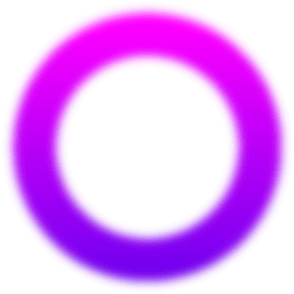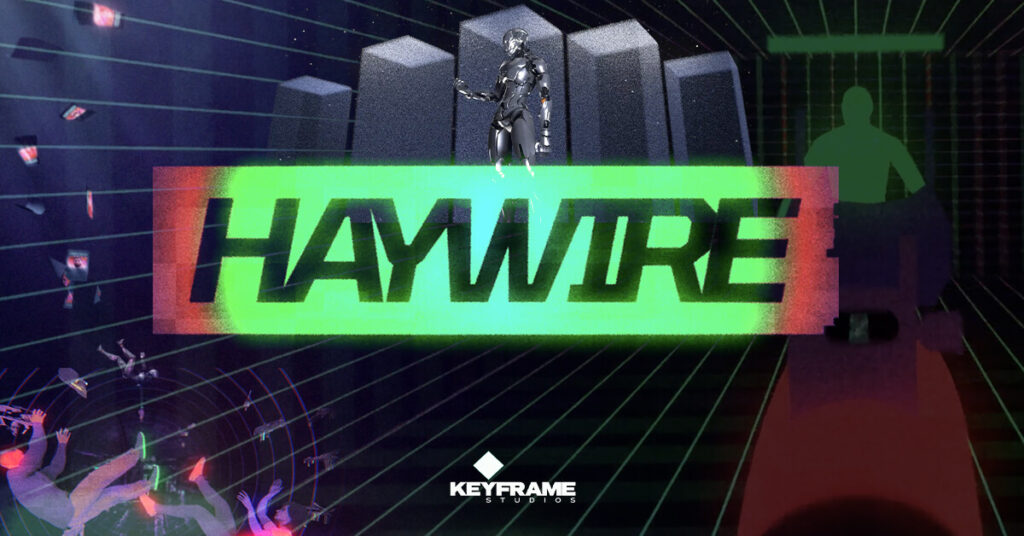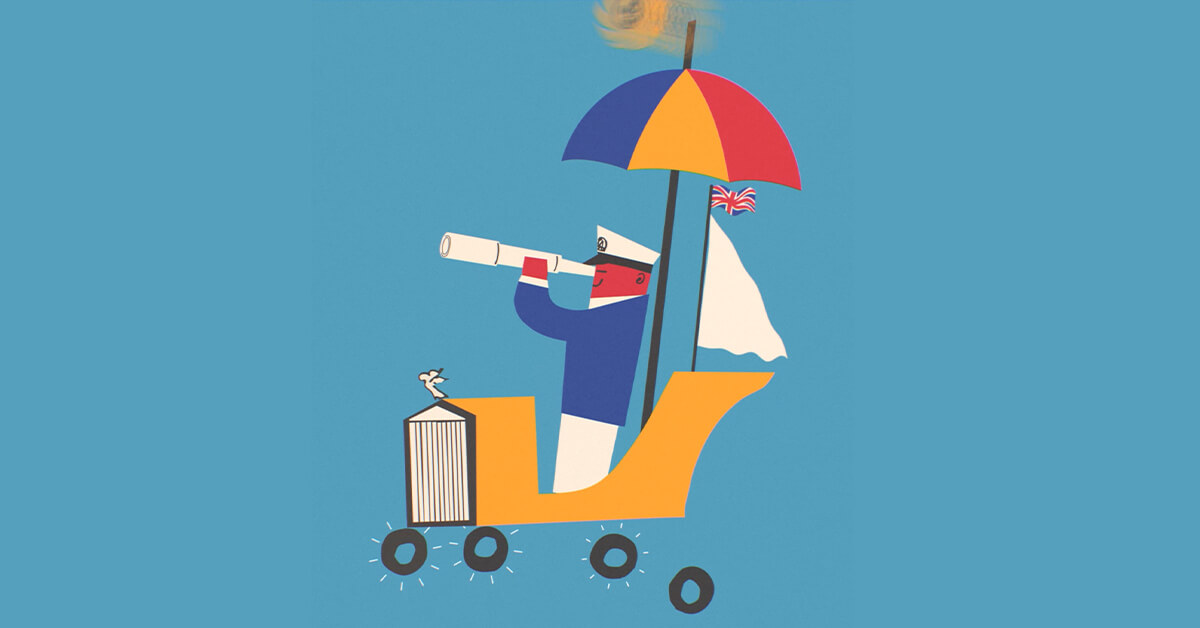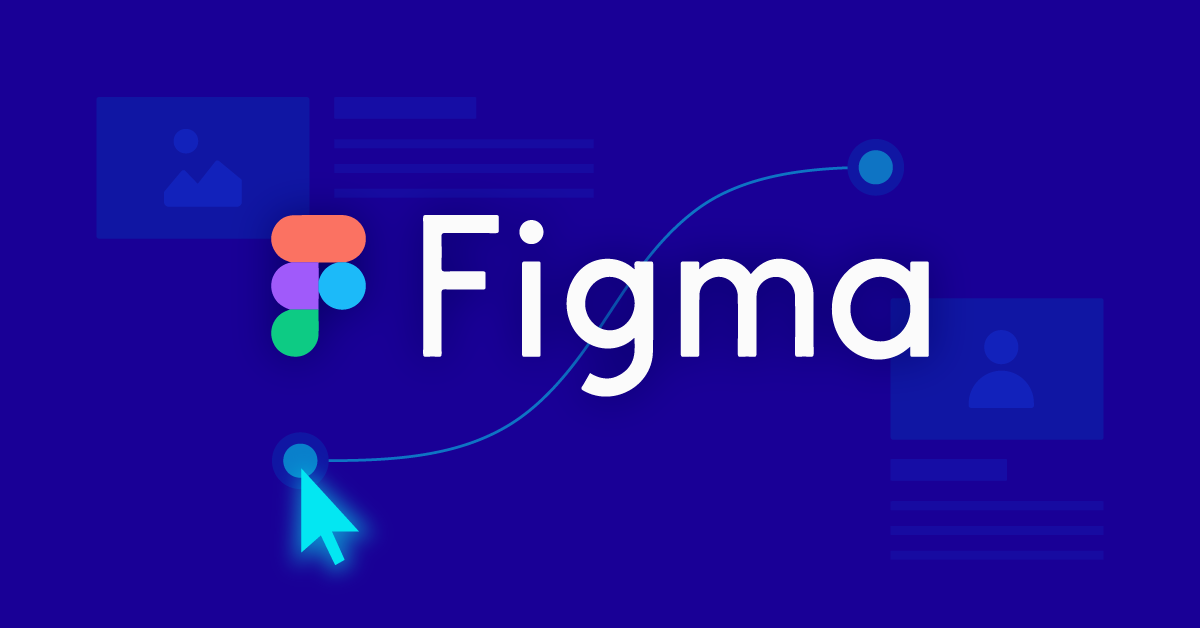Brief
Your group is responsible for creating one video file that will be submitted. The following are elements that must be included in the video:
- The game title
- A tagline
- The (fictional) studio logo (channel the major studios like Blizzard, Annapurna, Nintendo, but make it your own)
- The visuals for your game
- The style is up to you: 8-bit pixel art, 3D realism, glitchy retro anime, stick figures-whatever makes sense for your concept.
Role and team
On this project, I led a team of 5 motion designers, including myself, with 6 time zones from motion designers based in Canada, New York, Brazil, Vietnam/ Japan, and the United Kingdom (Mitch moved two separate time zones within the month-long project while travelling; incredible!) Each of us took part in each stage together, developing the project from start to finish. I conducted weekly calls to discuss the tasks that needed to be done.
Team Members
- Mitch Centers (Time zone:
Vietnam (GMT+7)> Japan (UTC+09:00)) – 3D animation (Linkedin) - Harry Flaherty (Time zone: BST) – 2D/3D Animation, Group Lead (Linkedin)
- Miguel Gamez (Time zone: MDT) – 3D animation (Linkedin)
- Shuxiang Huang (Time zone: EST) – 2D Animation, Storyboard (Linkedin)
- João R Zanetti (Time zone: BRT) – Final Edit, Logo Design, Colourist (Linkedin)
Production document
To ensure we are all aligned on the tasks that need to be done. A production document was made that included. Relevant links, Meeting notes, Music research, Time zones of each designer, Brief requirements, File naming scheme, copyright material (asset list), to-do lists, Animatic and any other miscellaneous items.
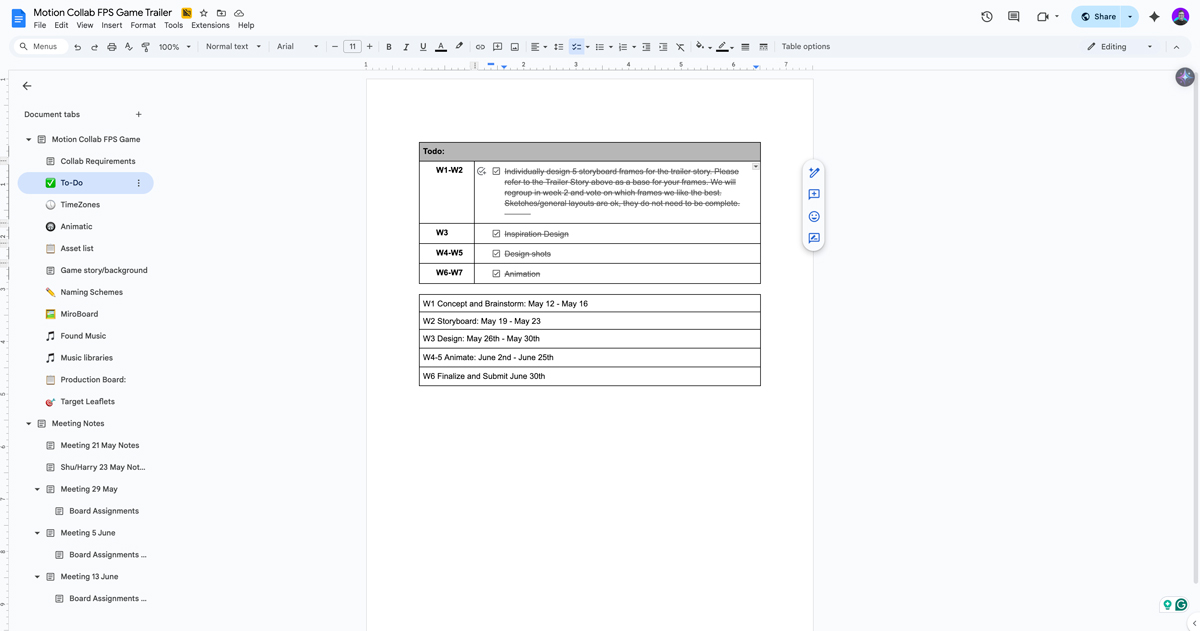
Storyboard
So, when creating the storyboard and getting a story together. I had the team create a storyboard and a story for each, and then we jumped onto the call. Each designer presented their idea of the storyline and storyboards. From there, we voted on which storyboard/storyline to work from. As we developed it further with Shuxiang, I had the team gather inspirational material on different styles we would explore, which, based on the storyboard, we had narrowed down to a Cyberpunk genre. (We thought of doing VO, but decided against it)

The animatic
Once we had the storyboard in place, I created a quick animatic to identify which frames we could expand on, allowing us to meet the 30-60-second requirement outlined in the brief. However, this animatic is below 30 seconds. We decided to create each shot for 3 seconds, as João would use these later to edit together.
Miroboard (Moodboard research)
To gather visual research, we utilised Mitch’s Miroboard. During calls, we narrowed down to a style font, usage, and gathered inspiration to move onto the design phase.
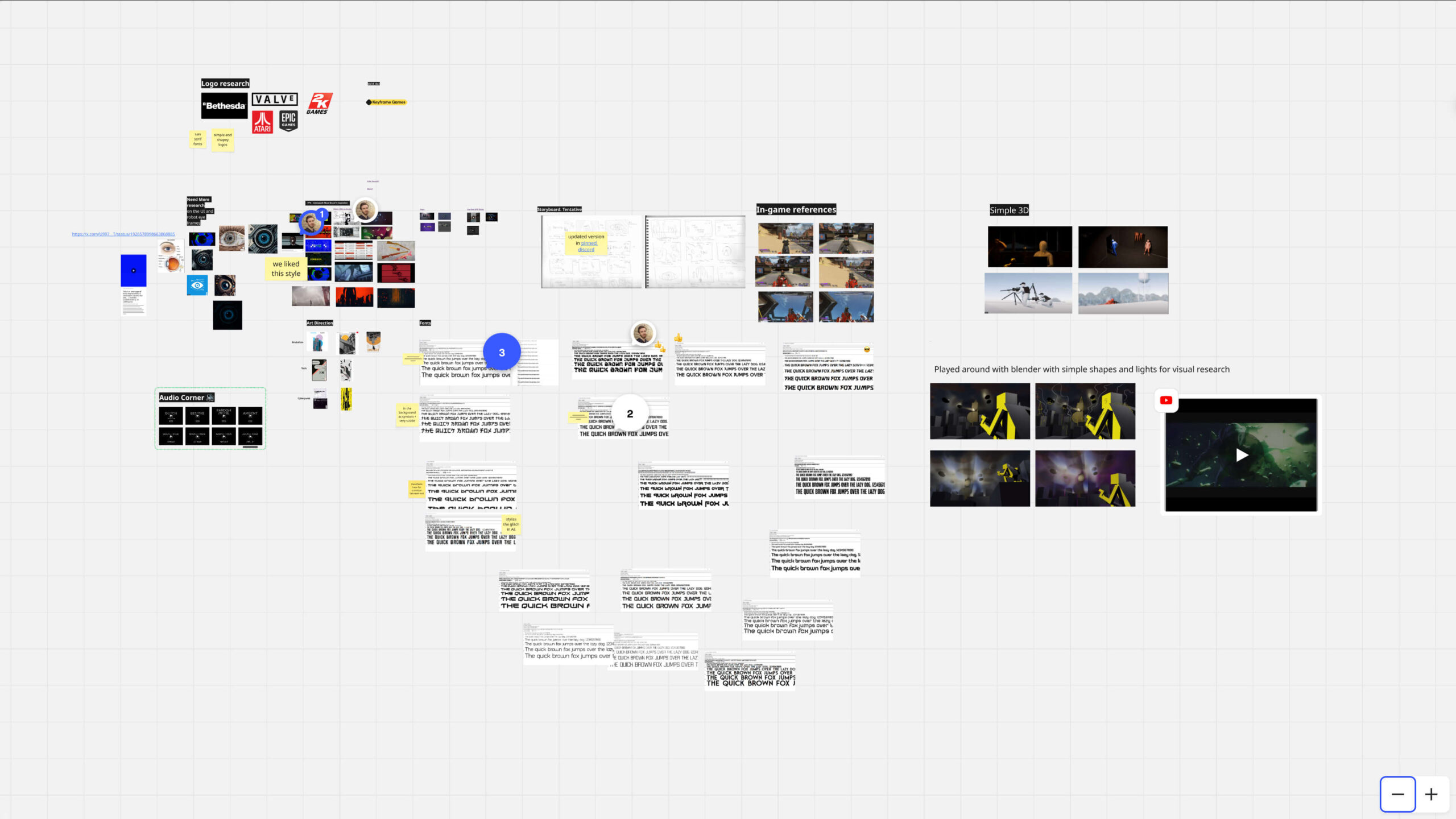
Shotlist
Put together by Mitch, we each picked from the storyboard which shots we wanted to do, along with review notes and production notes on what we could use on how the pages should be animated. (Here so that you can see who did which shot) Miguel and Mitch created the 3D scenes, João designed the logos/logo scenes, and handled colouring and combined the scenes for the final editing with added sound effects. Shuxiang handled the FPS scenes and the eye scenes, and I primarily worked on the HUD display scenes and one scene featuring falling people in 3D space.

Styleframes
Before getting into the animation, the production board was created, where we would develop individual style frames to finalise the design, using the inspiration material and storyboard as a baseline to develop the shots. I asked everyone to develop in greyscale. Using one frame as a starting point, we would select the best colouring developed by João, applying a Colorama effect to create consistent colouring throughout the trailer and help with the speed of creation. He also created adjustment layers to add texture, such as slight distortion and grain/glow.
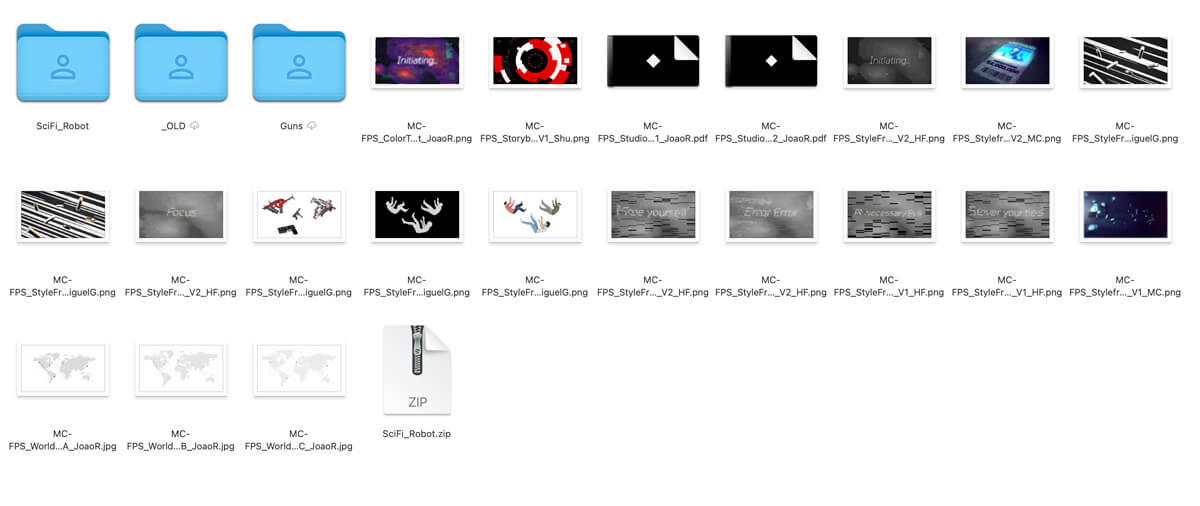

This is the frame we used to figure out the colouring.
Production studio/game logo
The creation of the studio / Game logo was created by João, creating different designs and iterations where we all agreed on the final design. He would then animate these to his scenes.
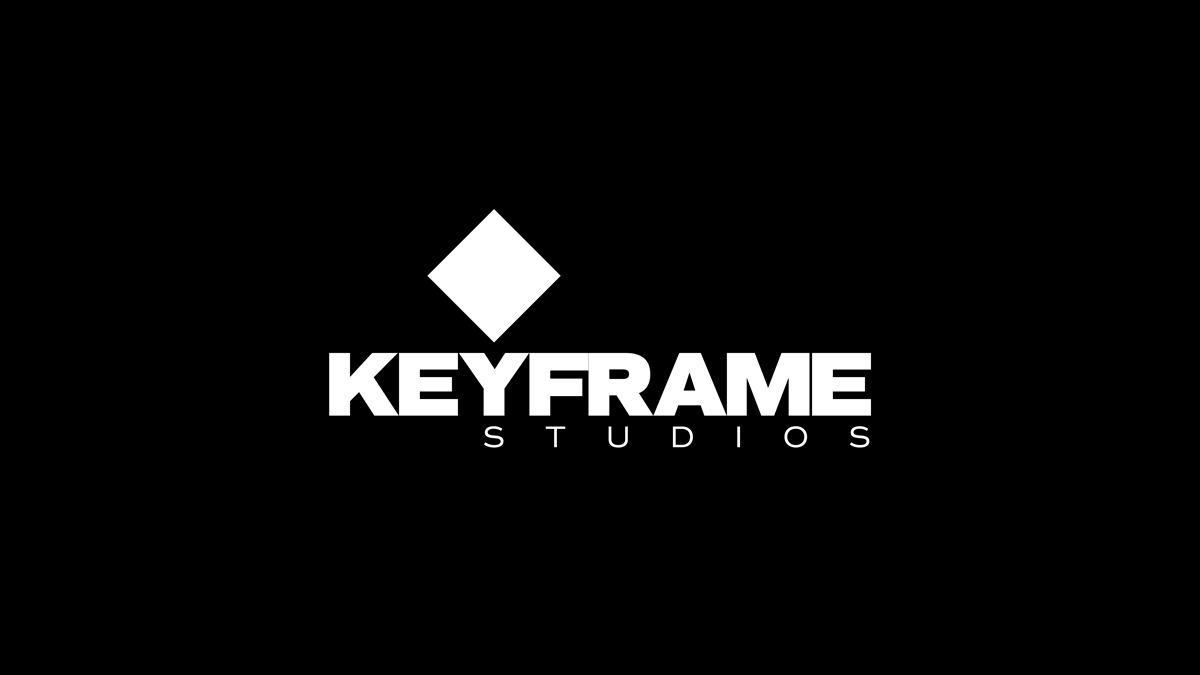
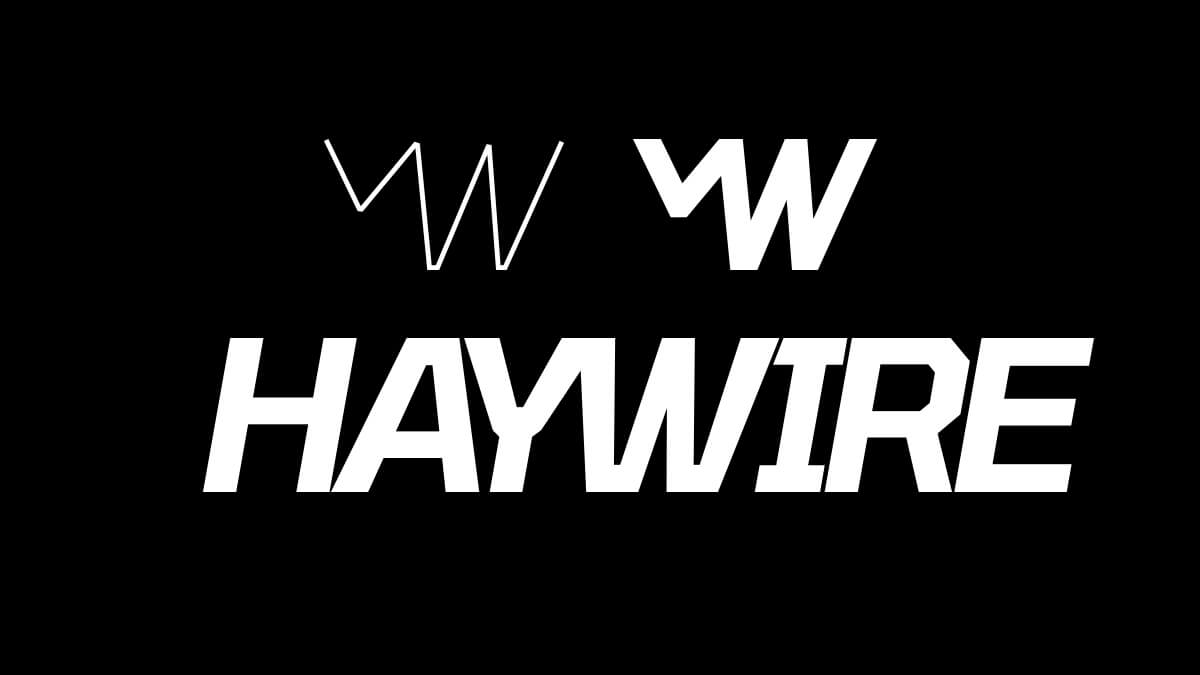
My shots
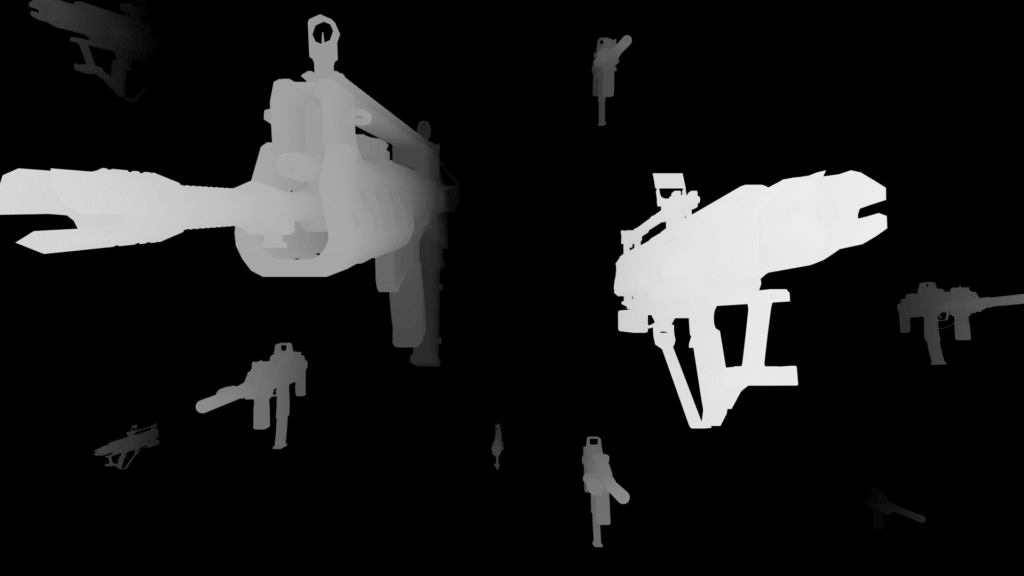
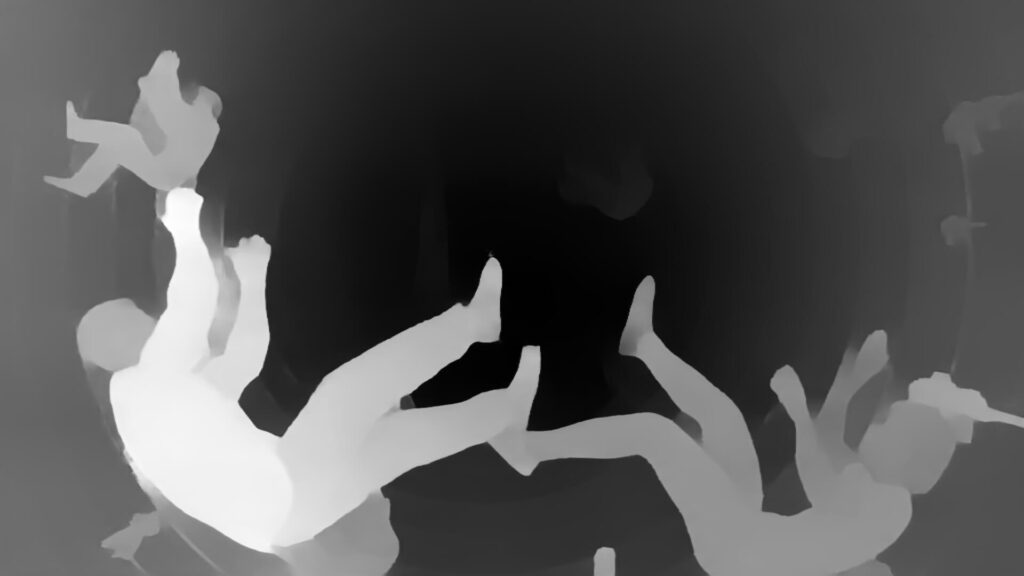
To achieve the desired depth of field, I created a depth map and used the camera blur effects to select which areas I wanted in focus. However, given the complexity of the scene in After Effects, the depth map effect didn’t work (the program crashed a few times), so I opted to export a PNG sequence of the scene. I then created a test frame in Photoshop, utilising the Neural Filter’s Depth Blur to generate the depth map. Once satisfied with the result, I automated this process by creating an action to batch-create depth maps for the remaining PNG images. Finally, I imported these into After Effects as an image sequence, successfully achieving the depth of field without resorting to a paid plugin, though that would have been simpler. I also individually added a distortion effect to each object to help transition between the gun and the people.
My process involved creating the initial design in Illustrator before importing the elements into After Effects. There, I animated each component individually and then utilised the 3D camera (among other effects) to construct the overall scene. To achieve a unique visual style, I specifically separated the background elements from the foreground HUD display. I also used the sound effects to add a bit more engagement to the scenes.
Final piece
Once we had the animation created, it would be sent over to João for the final edit.
